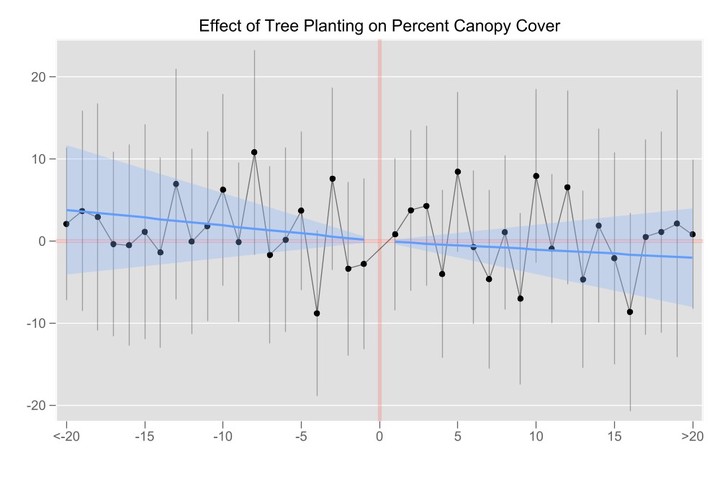Limited effects of tree planting on forest canopy cover and rural livelihoods in Northern India
 Percent forest canopy cover in years before and after tree planting
Percent forest canopy cover in years before and after tree plantingAbstract
Many countries have adopted large-scale tree planting programmes as a climate mitigation strategy and to support local livelihoods. We evaluate a series of large-scale tree planting programmes using data collected from historical Landsat imagery in the state of Himachal Pradesh in Northern India. Using this panel dataset, we use an event study design to estimate the socioeconomic and biophysical impacts over decades of these programmes. We find that tree plantings have not, on average, increased the proportion of forest canopy cover and have modestly shifted forest composition away from the broadleaf varieties valued by local people. Further cross-sectional analysis, from a household livelihood survey, shows that tree planting supports little direct use by local people. We conclude that decades of expensive tree planting programmes in this region have not proved effective. This result suggests that large-scale tree planting may sometimes fail to achieve its climate mitigation and livelihood goals.